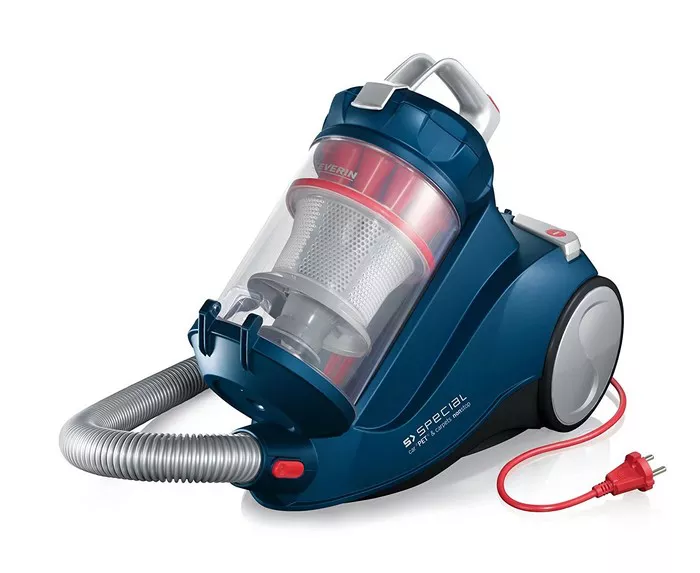Vacuum cleaners are indispensable tools in modern households, facilitating efficient cleaning and maintenance of various surfaces. Among the plethora of options available, two primary types stand out: dry and wet vacuum cleaners. Understanding the differences between these two variants is crucial for selecting the most suitable option for your cleaning needs.
Functionality
Dry vacuum cleaners, as the name suggests, are designed primarily for cleaning dry debris such as dust, dirt, and pet hair from carpets, floors, and upholstery. They utilize suction power to lift particles into a dustbin or bag for disposal. These cleaners typically come with various attachments to enhance versatility and reach.
On the other hand, wet vacuum cleaners are specifically engineered to handle liquid spills and wet messes. They boast a unique feature—a separate compartment for storing liquid waste, preventing it from damaging the internal components. Wet vacuums are invaluable for cleaning up spills in kitchens, bathrooms, and basements, offering a convenient solution for dealing with liquid messes.
Construction and Design
Dry vacuum cleaners are constructed with components optimized for handling dry debris efficiently. They feature filters, often HEPA filters, to capture fine particles and prevent them from being released back into the air. The design focuses on maximizing suction power and airflow to ensure thorough cleaning.
Conversely, wet vacuum cleaners incorporate sealed components and waterproof materials to withstand exposure to liquids. They feature specialized tanks for collecting liquid waste, equipped with mechanisms to prevent leakage and maintain the integrity of the machine. Additionally, wet vacuums may include drainage ports for easy disposal of collected liquids.
Versatility
While dry vacuum cleaners excel at cleaning dry surfaces, they may struggle with wet spills and liquid messes. Attempting to use a dry vacuum on liquids can damage the internal components and pose safety hazards. However, many modern dry vacuums offer optional attachments and accessories that enable limited wet cleaning capabilities, such as cleaning up small spills.
Wet vacuum cleaners, with their ability to handle both dry and wet messes, offer superior versatility. They eliminate the need for separate cleaning equipment, providing a single solution for various cleaning tasks. Whether it’s a dusty floor or a spilled beverage, a wet vacuum can tackle the mess with ease, making it a versatile choice for households and commercial settings alike.
Cleaning Performance
In terms of cleaning performance, both dry and wet vacuum cleaners have their strengths and limitations. Dry vacuum cleaners excel at removing dry debris from surfaces, leaving them clean and dust-free. Their powerful suction and specialized attachments make them particularly effective on carpets, rugs, and upholstery.
Wet vacuum cleaners, on the other hand, are unmatched when it comes to tackling liquid spills and wet messes. Whether it’s spilled drinks, pet accidents, or leaky pipes, a wet vacuum can swiftly extract the liquid, preventing it from seeping into surfaces and causing damage. Additionally, wet vacuums often feature powerful motors and wide nozzles to expedite the cleaning process, making them highly efficient in handling liquid spills.
Maintenance Requirements
Maintaining a vacuum cleaner is essential to ensure optimal performance and longevity. Dry vacuum cleaners typically require regular filter replacements to maintain suction power and prevent dust buildup. Cleaning the dustbin or bag and inspecting the brushes for debris are also recommended to prevent clogs and maintain efficiency.
Wet vacuum cleaners require additional maintenance due to their exposure to liquids. After each use, it’s crucial to empty the liquid waste compartment and clean the interior to prevent mold and bacteria growth. Additionally, checking for leaks, inspecting seals, and ensuring proper drainage are essential to prevent damage and maintain functionality.
Safety Considerations
Safety is paramount when using any household appliance, including vacuum cleaners. Dry vacuum cleaners pose minimal safety risks when used as intended on dry surfaces. However, attempting to vacuum liquids with a dry vacuum can result in electrical hazards, damage to the machine, and potential injury to the user.
Wet vacuum cleaners are designed with safety in mind, featuring sealed components and waterproof construction to prevent electrical accidents. Nevertheless, it’s essential to follow safety guidelines and avoid vacuuming liquids that may contain hazardous materials or pose contamination risks. Additionally, unplugging the vacuum before emptying the liquid waste compartment reduces the risk of electric shock.
Cost and Investment
When considering the purchase of a vacuum cleaner, cost is often a significant factor. Dry vacuum cleaners typically come at a lower price point compared to wet vacuums, making them a budget-friendly option for general household cleaning needs. Additionally, the maintenance costs for dry vacuums, such as filter replacements, are generally lower.
Wet vacuum cleaners, due to their specialized design and enhanced functionality, tend to be more expensive than dry vacuums. However, their versatility and ability to handle liquid messes justify the higher initial investment for many users. Moreover, the convenience of having a single machine for both dry and wet cleaning tasks can outweigh the cost difference for some consumers.
Conclusion
In summary, dry and wet vacuum cleaners serve distinct purposes and offer unique advantages depending on the cleaning task at hand. Dry vacuums excel at removing dry debris from surfaces, while wet vacuums are specifically designed for handling liquid spills and wet messes. Understanding the differences in functionality, construction, versatility, cleaning performance, maintenance requirements, safety considerations, and cost can help you make an informed decision when selecting the most suitable vacuum cleaner for your needs. Whether it’s maintaining pristine carpets or tackling unexpected spills, choosing the right vacuum cleaner ensures efficient and effective cleaning results.

